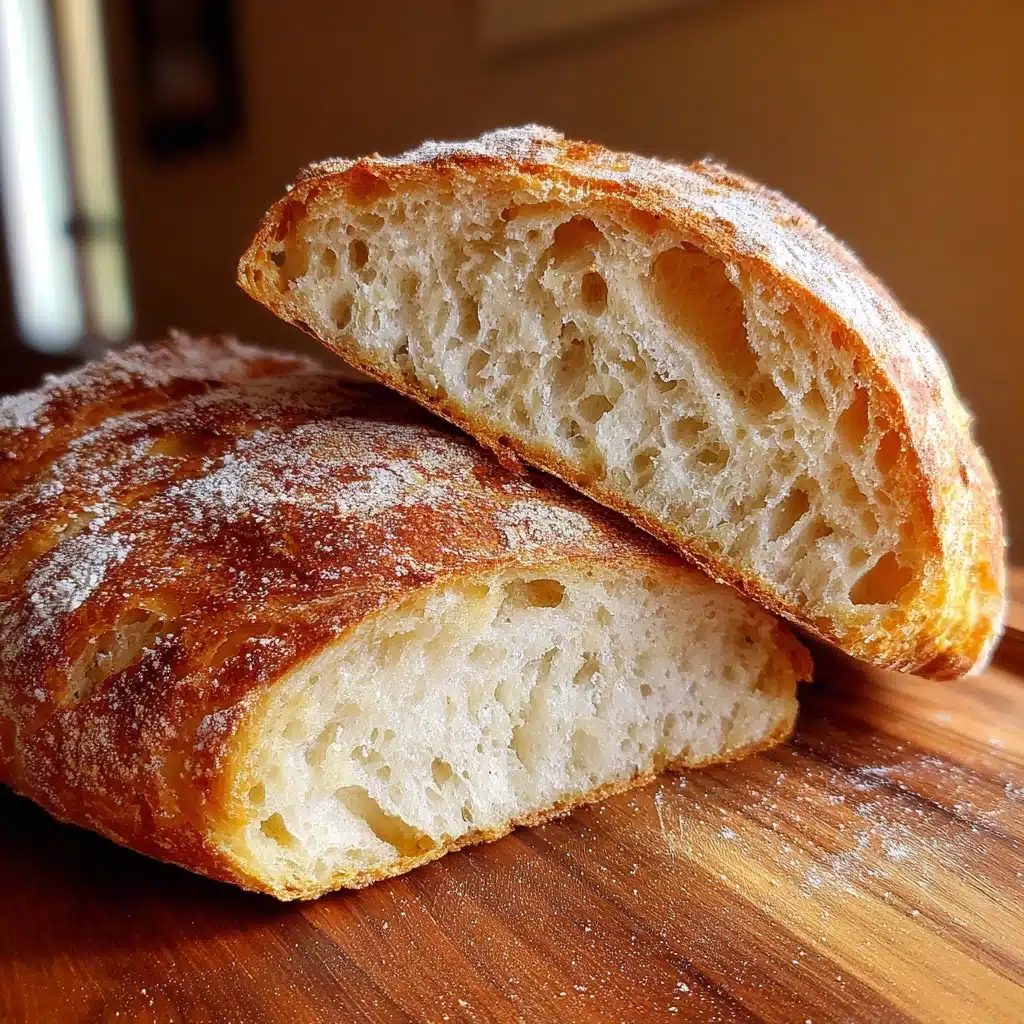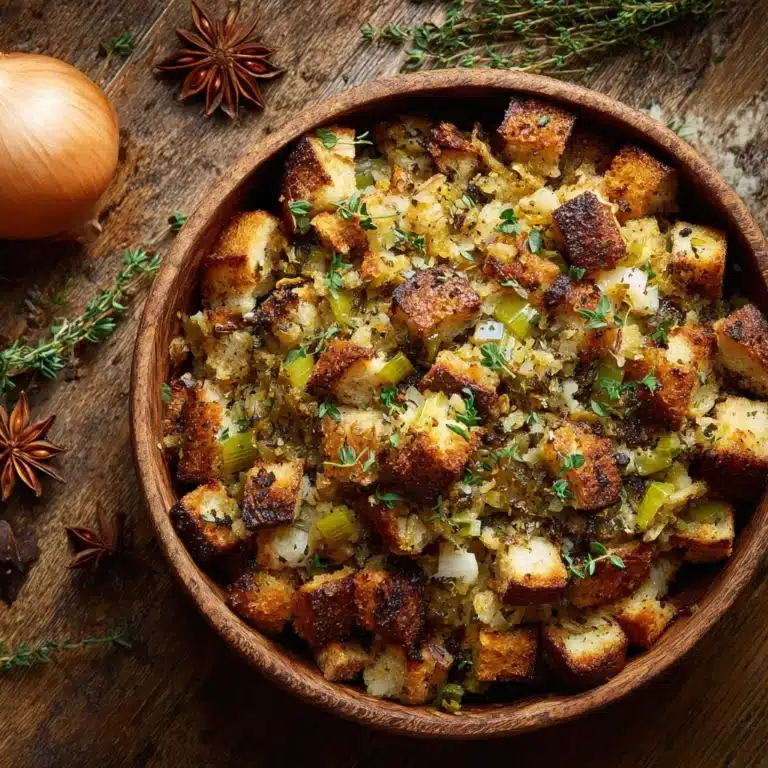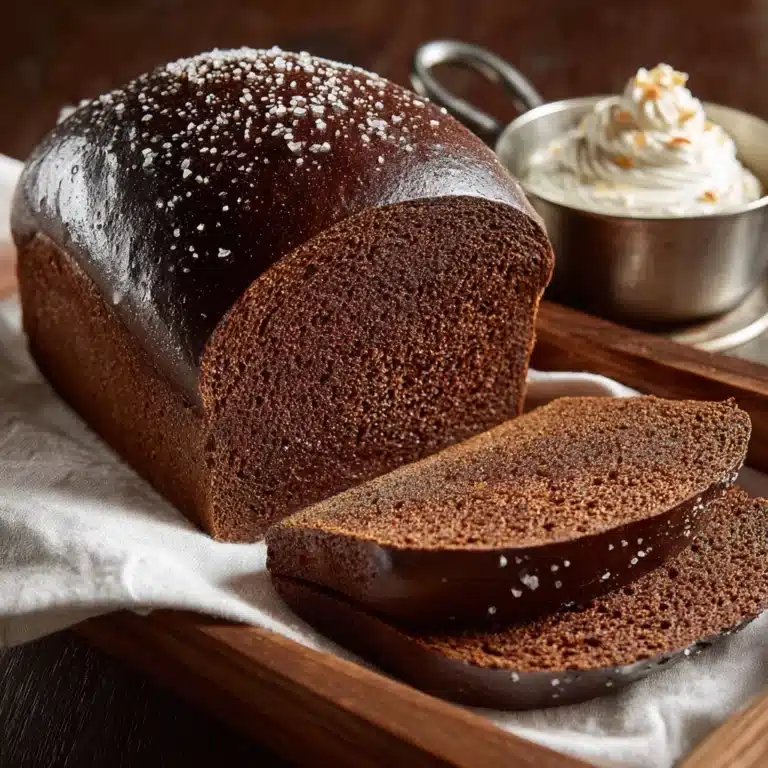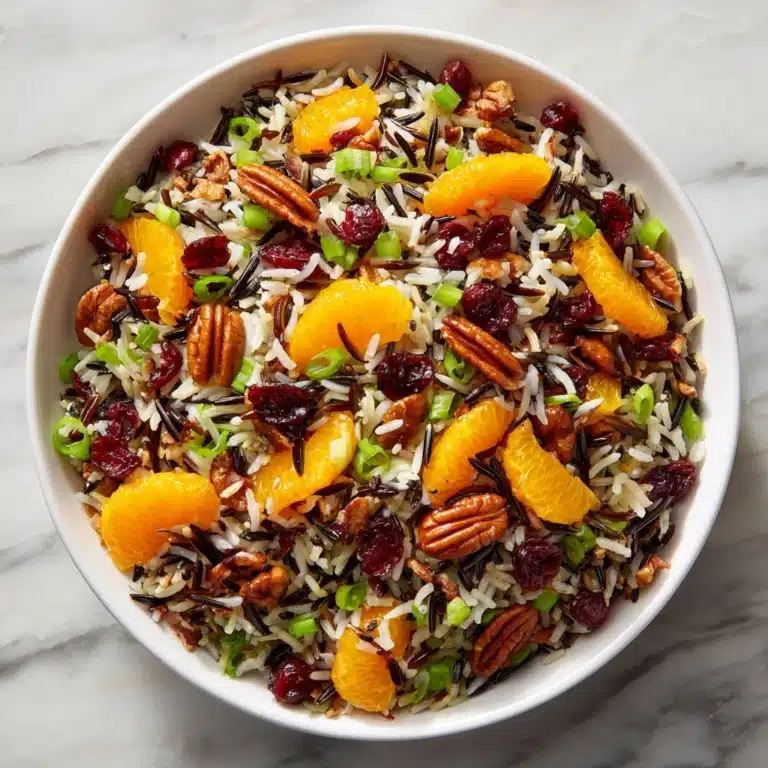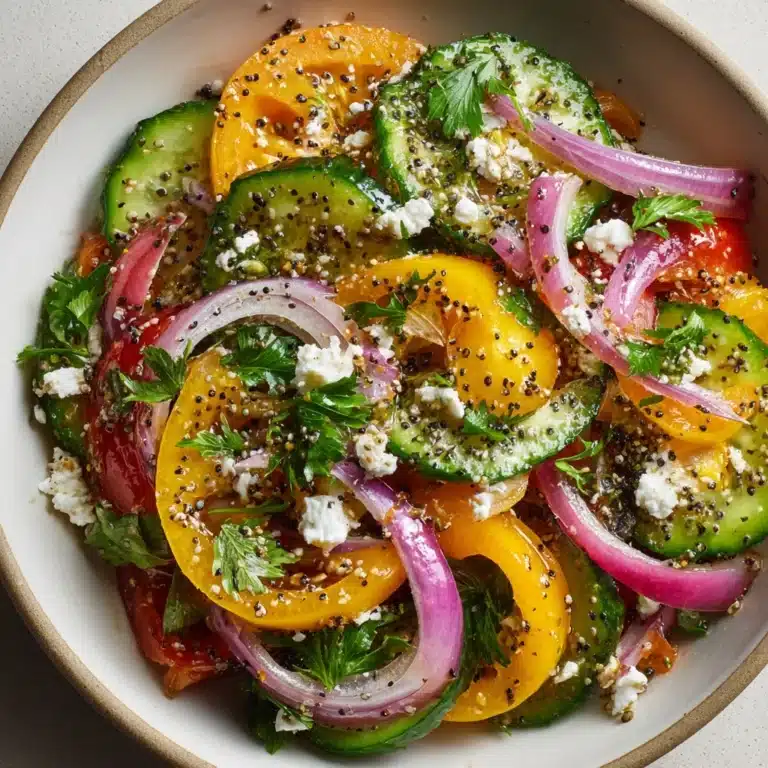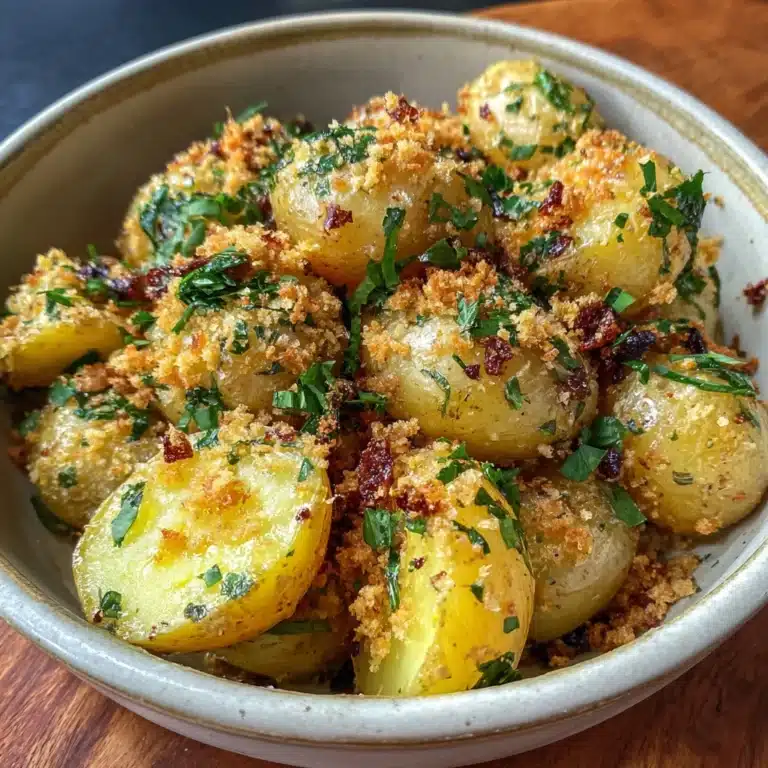When you want bread that strikes the perfect balance between chewy interior, open crumb, and gloriously crisp crust, few things beat a fresh Ciabatta straight from your own oven. This classic Italian loaf is famous for its lofty holes and rustic, flour-dusted appearance, bursting with flavor and a hint of olive oil. The magic truly lies in its simplicity: with just a handful of ingredients and a little patience, you can produce a Ciabatta that will make every sandwich, soup, or snack utterly unforgettable.
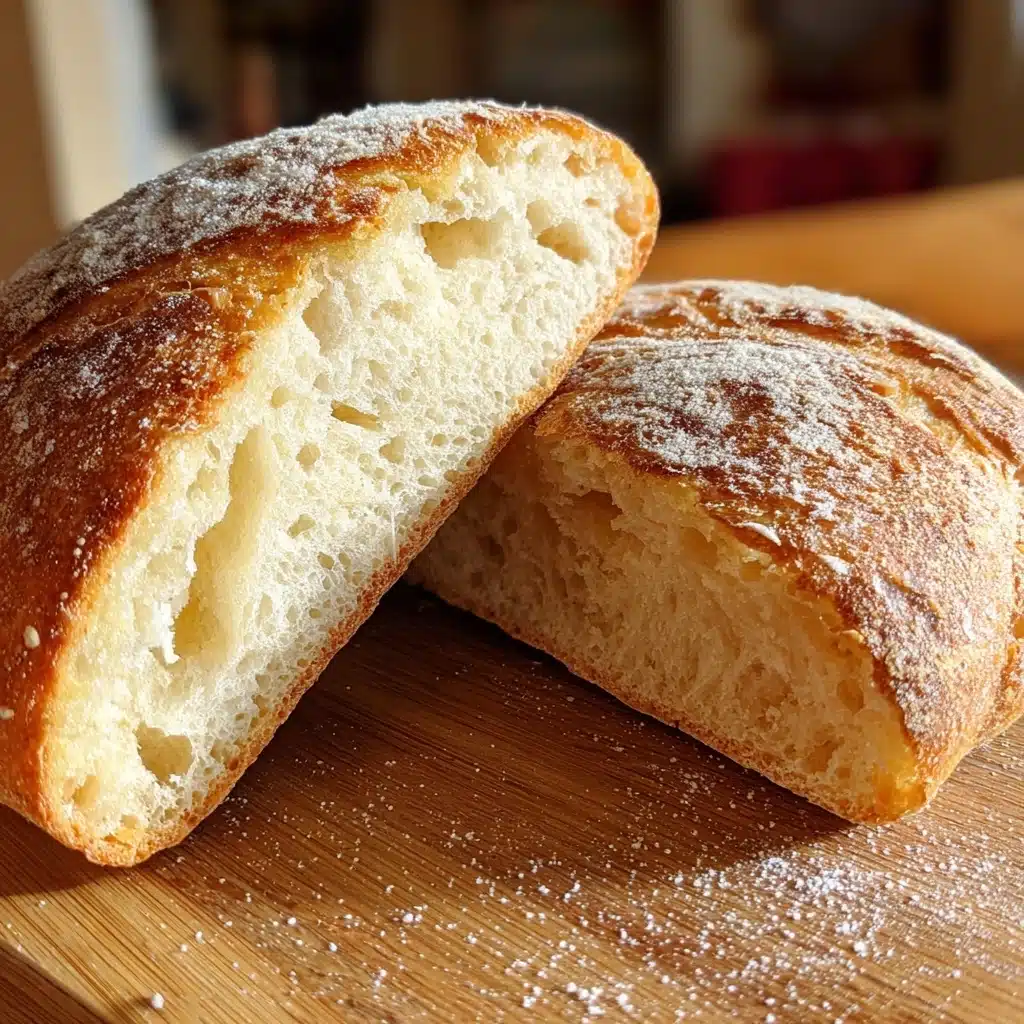
Ingredients You’ll Need
The best Ciabatta begins with a handful of honest, uncomplicated ingredients. Each one plays a key role in building flavor, structure, and that delightfully airy texture that defines this Italian favorite.
- All-purpose flour: The foundation for both the biga and the dough, lending structure and a mild flavor that lets the bread’s aroma shine.
- Water (room temperature): Proper hydration is the secret to Ciabatta’s irregular holes and tender crumb—don’t be tempted to skimp!
- Active dry yeast: Just a pinch in the sponge, and a bit more in the dough, to coax out a gentle rise and plenty of character.
- Salt: Essential for balancing flavors and tightening the gluten structure so your Ciabatta emerges perfectly chewy.
- Olive oil: A splash enhances the crust’s crispness and adds a whisper of rich, Mediterranean flavor.
- Extra flour (for dusting): Prevents sticking and helps shape that signature rustic exterior.
How to Make Ciabatta
Step 1: Make the Sponge (Biga)
Combine 1 cup all-purpose flour, ½ cup room temperature water, and ⅛ teaspoon active dry yeast in a medium bowl. Stir until it forms a sticky, cohesive mixture. Cover the bowl with plastic wrap or a plate, and let it rest at room temperature for 12 to 18 hours—overnight is ideal. The biga will develop bubbles and a lovely aroma, laying the foundation for Ciabatta’s complexity.
Step 2: Mix and Knead the Dough
Add your fluffy, fermented sponge to a large bowl or stand mixer. Top it with 2 cups all-purpose flour, ¾ cup water, 1¼ teaspoons salt, ½ teaspoon active dry yeast, and 1 tablespoon olive oil. Mix thoroughly until you have a sticky, shaggy dough. Knead by hand (embracing the mess!) or on medium speed for 8 to 10 minutes, until the dough feels elastic and a touch glossy. It will be very wet and soft—resist the urge to add more flour.
Step 3: First Rise
Transfer your dough to a lightly oiled bowl, turning it once to coat. Cover and let it rise at room temperature for 1½ to 2 hours, or until doubled in size. This step helps the Ciabatta develop its signature air pockets and elasticity.
Step 4: Shape and Rest
Gently tip the risen dough onto a generously floured surface. With floured hands, stretch it into a rough rectangle. Fold each short end toward the center, letter-style, then flip the dough so the seam side is down. Allow it to rest for 30 minutes. This gentle folding builds structure without knocking out the airiness.
Step 5: Second Rise and Preheat Oven
Lay a parchment paper sheet on a baking peel or the back of a baking sheet, dusting it with flour. Transfer the dough rectangle onto the prepared parchment, reshaping only as much as needed. Let it rest again for 15 minutes while your oven preheats to 450°F with a baking stone or steel inside if you have one—this ensures a crispy Ciabatta crust.
Step 6: Bake and Cool
Slide the dough with parchment onto the hot stone or a baking sheet. Bake for 20–25 minutes until the loaf is deeply golden brown and sounds hollow when tapped on the bottom. Remove to a wire rack and let your Ciabatta cool completely before slicing; patience here is rewarded with the best texture!
How to Serve Ciabatta
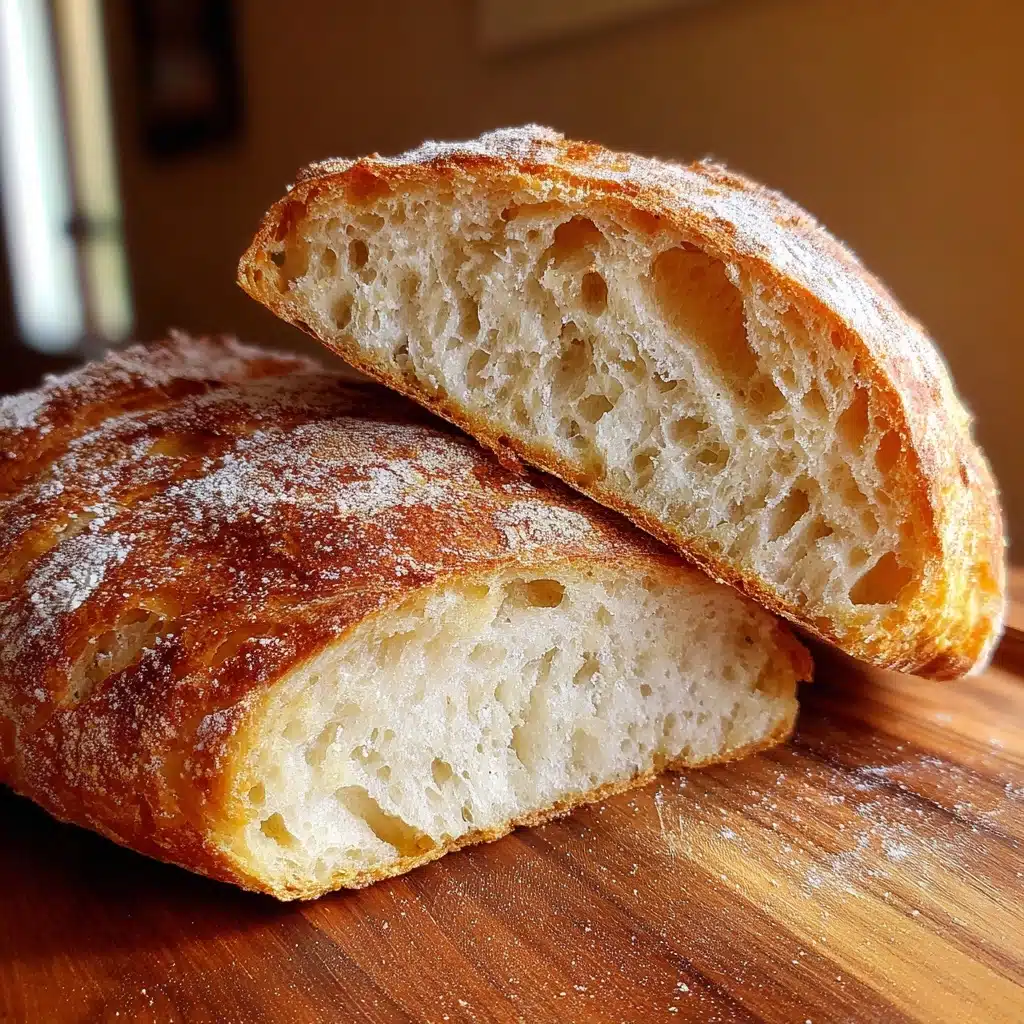
Garnishes
Ciabatta’s beauty shines even brighter with a sprinkle of flaky sea salt on its golden crust or a decadent glug of fresh, fruity olive oil. For a touch of herbaceous flair, try scattering chopped rosemary or thyme over the warm bread—it elevates your loaf from rustic to restaurant-worthy in seconds.
Side Dishes
This bread pairs beautifully with classic Italian sides like minestrone soup, caprese salad, or a hearty bowl of Tuscan bean stew. Serve thick slices alongside a simple antipasto platter or use them to soak up every last drop of your favorite pasta sauce—Ciabatta never shies away from bold flavors.
Creative Ways to Present
Use Ciabatta as the base for bruschetta loaded with summer tomatoes and garlic, or slice it thin for crunchy crostini appetizers. For sandwiches, its open crumb and sturdy crust make the ultimate Italian panini—just grill with your favorite cheeses, meats, or veggies for a melt-in-your-mouth meal. You can even cube it for panzanella salad or tear it into hearty croutons.
Make Ahead and Storage
Storing Leftovers
To keep your Ciabatta fresh, store it in a paper bag at room temperature for up to two days. Avoid plastic, which can soften the crust. If you need a bit more time, wrap the loaf in a clean kitchen towel and set it inside an airtight bread box.
Freezing
Ciabatta freezes beautifully! Once completely cooled, slice or leave whole, then wrap tightly in plastic wrap and place in a zip-top freezer bag. It will stay fresh for up to three months. For best flavor, freeze within a day of baking.
Reheating
To revive that crispy crust, thaw frozen Ciabatta (if needed), then warm slices or whole loaves in a 350°F oven for 10 to 12 minutes. The crust returns to its crackly glory, and the interior regains its springy, fresh-baked texture.
FAQs
Why is my Ciabatta dough so sticky?
High hydration gives Ciabatta its airy, open crumb and chewy texture. A very sticky dough is normal; avoid adding extra flour or you’ll lose the signature holes and lightness that make this bread special.
Can I make Ciabatta without a stand mixer?
Absolutely! Though a mixer makes handling the sticky dough easier, you can mix and knead by hand. Try using a bench scraper to help with stretch-and-fold kneading, or gently oil your hands to minimize sticking.
How do I know when my Ciabatta is done baking?
The loaf should be deeply golden brown and make a hollow sound when tapped underneath. If in doubt, use an instant-read thermometer: the internal temperature should reach about 200°F.
What if I don’t have a baking stone or steel?
No problem! Bake your Ciabatta on an inverted heavy-duty baking sheet. You might get a slightly different crust, but the bread will still be delicious—and you’ll get a beautiful rise.
Can I add herbs or cheese to the dough?
Yes, Ciabatta is wonderfully versatile! Try folding in chopped fresh herbs, roasted garlic, or shredded cheeses at the very end of mixing for a flavorful twist on the traditional loaf.
Final Thoughts
Every home baker deserves to experience the joy of pulling a golden, crusty Ciabatta from the oven and hearing that first crackle as it cools. This recipe is a labor of love, but the payoff is pure Italian comfort—deliciously simple, endlessly adaptable, and absolutely worth sharing. Give it a try and let your kitchen be filled with the irresistible aroma (and taste) of real homemade Ciabatta.
Print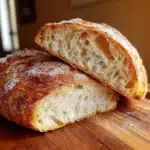
Ciabatta Recipe
- Total Time: 15 hours
- Yield: 1 loaf 1x
- Diet: Vegan
Description
Learn how to make a delicious ciabatta bread at home with this easy recipe. This artisan loaf has a crusty exterior and a soft, airy interior, perfect for sandwiches or dipping in olive oil.
Ingredients
For the sponge (biga):
- 1 cup all-purpose flour
- ½ cup water (room temperature)
- ⅛ teaspoon active dry yeast
For the dough:
- All of the sponge
- 2 cups all-purpose flour
- ¾ cup water (room temperature)
- 1¼ teaspoons salt
- ½ teaspoon active dry yeast
- 1 tablespoon olive oil (plus more for greasing)
Instructions
- Start by making the sponge: In a medium bowl, mix 1 cup flour, ½ cup water, and ⅛ teaspoon yeast until smooth. Cover and let sit at room temperature for 12–18 hours, or overnight.
- For the dough: Combine the sponge, 2 cups flour, ¾ cup water, 1¼ teaspoons salt, ½ teaspoon yeast, and 1 tablespoon olive oil. Mix until a sticky, shaggy dough forms. Knead for 8–10 minutes until elastic. Let rise for 1½–2 hours until doubled.
- Turn dough onto a floured surface, shape, and let rest. Preheat oven to 450°F. Bake for 20–25 minutes until golden brown.
- Cool on a wire rack before slicing.
Notes
- Hydration is key for ciabatta’s airy texture.
- Avoid adding too much flour—wet dough is normal.
- A stand mixer or stretch-and-fold method helps manage stickiness.
- Prep Time: 20 minutes (plus overnight rest)
- Cook Time: 25 minutes
- Category: Bread
- Method: Baking
- Cuisine: Italian
Nutrition
- Serving Size: 1 slice (1/10 loaf)
- Calories: 130
- Sugar: 0g
- Sodium: 240mg
- Fat: 2g
- Saturated Fat: 0g
- Unsaturated Fat: 2g
- Trans Fat: 0g
- Carbohydrates: 25g
- Fiber: 1g
- Protein: 3g
- Cholesterol: 0mg
